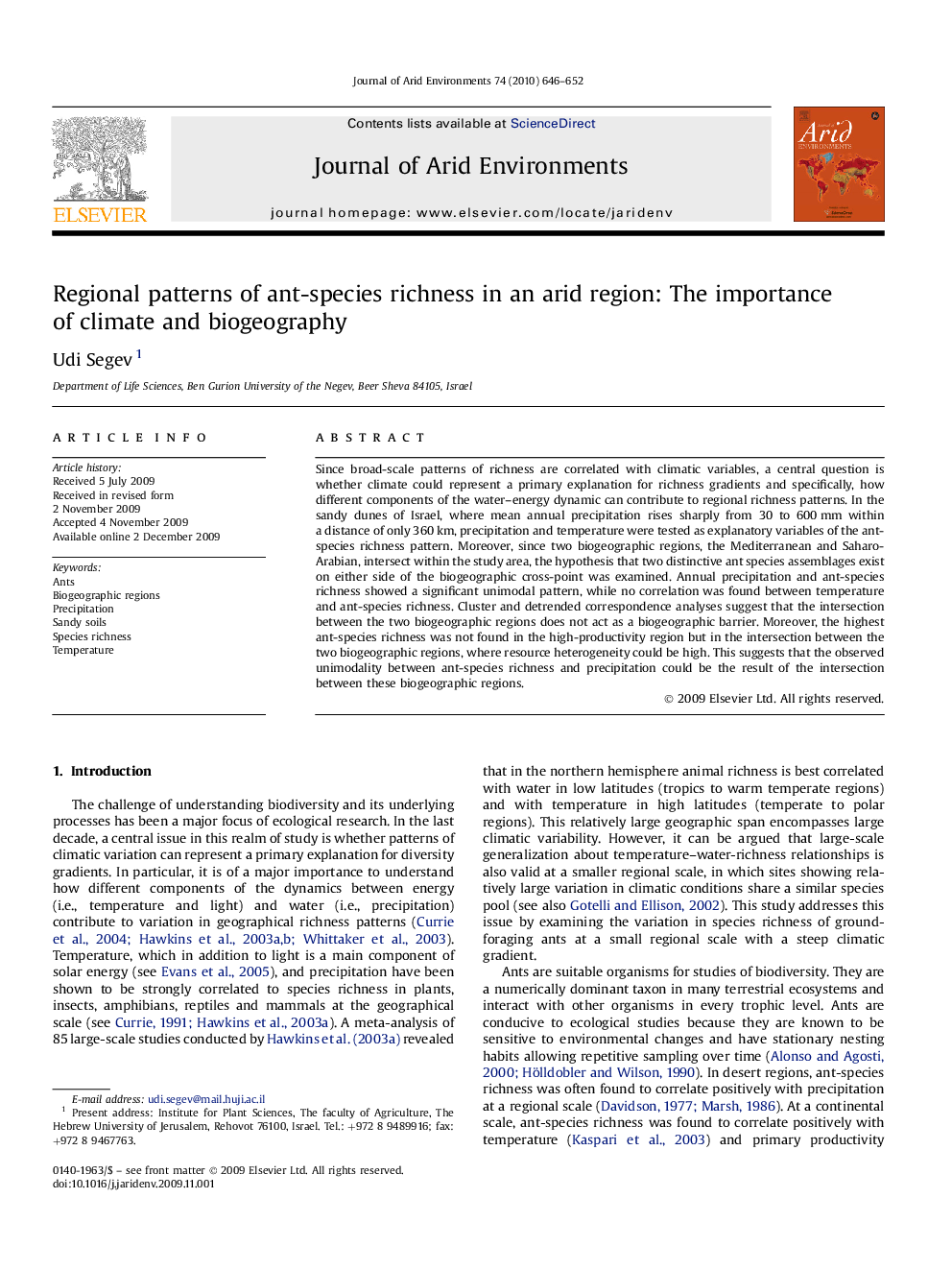| Article ID | Journal | Published Year | Pages | File Type |
|---|---|---|---|---|
| 4394113 | Journal of Arid Environments | 2010 | 7 Pages |
Since broad-scale patterns of richness are correlated with climatic variables, a central question is whether climate could represent a primary explanation for richness gradients and specifically, how different components of the water–energy dynamic can contribute to regional richness patterns. In the sandy dunes of Israel, where mean annual precipitation rises sharply from 30 to 600 mm within a distance of only 360 km, precipitation and temperature were tested as explanatory variables of the ant-species richness pattern. Moreover, since two biogeographic regions, the Mediterranean and Saharo-Arabian, intersect within the study area, the hypothesis that two distinctive ant species assemblages exist on either side of the biogeographic cross-point was examined. Annual precipitation and ant-species richness showed a significant unimodal pattern, while no correlation was found between temperature and ant-species richness. Cluster and detrended correspondence analyses suggest that the intersection between the two biogeographic regions does not act as a biogeographic barrier. Moreover, the highest ant-species richness was not found in the high-productivity region but in the intersection between the two biogeographic regions, where resource heterogeneity could be high. This suggests that the observed unimodality between ant-species richness and precipitation could be the result of the intersection between these biogeographic regions.
